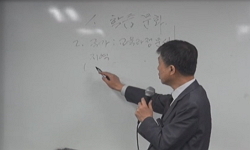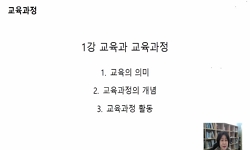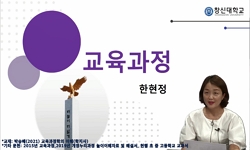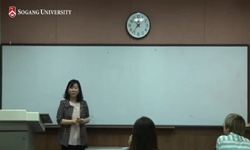본 연구에서 알아본 한국과 카자흐스탄의 헤어전공 전문대학 미용교육프로그램에 대한 기술통계 분석 결과는 다음과 같다. 한국과 카자흐스탄의 헤어전공미용전문대학 교육과정 비교로 한...
http://chineseinput.net/에서 pinyin(병음)방식으로 중국어를 변환할 수 있습니다.
변환된 중국어를 복사하여 사용하시면 됩니다.
- 中文 을 입력하시려면 zhongwen을 입력하시고 space를누르시면됩니다.
- 北京 을 입력하시려면 beijing을 입력하시고 space를 누르시면 됩니다.

한국과 카자흐스탄의 전문대학 미용교육프로그램 현황 및 개선방안 연구 = A Study on the current status of Beauty Education Program at Junior Colleges in Korea and Kazakhstan
한글로보기https://www.riss.kr/link?id=A108058216
- 저자
- 발행기관
- 학술지명
- 권호사항
-
발행연도
2022
-
작성언어
-
-
주제어
카자흐스탄 ; 미용교육 ; 교육과정 ; 기술통계 ; Kazakhstan ; Beauty Education ; Curriculum ; Descriptive statistics
-
KDC
600
-
등재정보
KCI등재후보
-
자료형태
학술저널
-
수록면
99-115(17쪽)
- DOI식별코드
- 제공처
-
0
상세조회 -
0
다운로드
부가정보
국문 초록 (Abstract)
본 연구에서 알아본 한국과 카자흐스탄의 헤어전공 전문대학 미용교육프로그램에 대한 기술통계 분석 결과는 다음과 같다. 한국과 카자흐스탄의 헤어전공미용전문대학 교육과정 비교로 한국의 서울전문대학은 전공과목 32과목에 71학점, 실습 765시간, 이론 555시간으로 전공합계 1,320시간이며, 계절 학기를 통한 현장실습은 2학점을 받고, 총 86학점에 1,545시간의 교육을 받는다. 경기전문대학은 63학점(전선5학점)과 21과목(전선3과목) 전공필수과목에 실습 750시간, 이론 150시간으로 전공합계는 900시간, 현장실습과 인턴십은 필수과목으로 120시간에 8학점이며, 총 80학점에 교육시간은 1,200시간이다. 카자흐스탄의 악토베전문대학은 전공 15과목으로 실습 332시간과 이론 394시간이며, 총 726시간이다. 720시간의 학교현장교육과 144시간의 졸업논문 관련실습, 필수과목으로 산업현장실습 864시간이며, 총 2,060시간의 실습시간을 갖으며, 총 교육시간은 4,320시간이다. 이러한 연구결과는 한국의 전문대학 교과목 구성이 세분화 되어있으며 체계적인 교육시스템과 전문성을 갖추고 있지만 현장실습교육은 현저히 부족하였다. 카자흐스탄의 전문대학은 한국보다 훨씬 많은 현장실습교육을 하는 것으로 나타났으나 교과목 구성의 세분화가 필요한 것으로 나타났다. 결론적으로 한국과 카자흐스탄은 국가 간의 교육체계가 달라 교육과정에도 많은 차이가 있었다. 학점중심의 한국전문대학 교육과정과 시간중심의 카자흐스탄 교육과정은 서로 상호간의 장단점이 있으므로 상호보완적 교육과정을 심도 있는 연구를 통해 구성 운영한다면 효과적일 것으로 사료된다. 본 연구의 의의는 한국과 카자흐스탄 두 나라의 미용전문대학 교육과정 시스템을 교육의 특성과 K-콘텐츠로 활용하여 세계로 뻗어나갈 수 있는 한국의 미용교육의 실체가 될 수 있도록 함과 동시에 한국과 카자흐스탄의 미용교육과 뷰티산업의 교류를 위함이다.
다국어 초록 (Multilingual Abstract)
This study attempted to analyze descriptive statistical of beauty education programs at hairdressing colleges in Korea and Kazakhstan. As a result, the findings were obtained as follows: In a comparison of the curricula of hair and beauty colleges in ...
This study attempted to analyze descriptive statistical of beauty education programs at hairdressing colleges in Korea and Kazakhstan. As a result, the findings were obtained as follows: In a comparison of the curricula of hair and beauty colleges in Korea and Kazakhstan, Seoul Junior College in Korea provided students with the education of total 1,320 hours consisted of 765 hours of practice, and 555 hours of theory for 71 credits in 32 majors. Students receive 2 credits from field practicum through seasonal semesters, and receive 1,545 hours of education for a total of 86 credits. .At Gyeonggi Junior College, students are required to have 63 credits (5 credits for major elective subjects) and 21 subjects (3 major elective subjects), and education of total 900 hours composed of 750 hours of practical training and 150 hours of theory. For field training and internship, students are required to have 8 credits for 120 hours of required subjects per 120 hours, and 1,200=hour educational time for total 80 credits. Aktobe Junior College in Kazakhstan provides students with the education of total 726 hours composed of 332 hours of practice and 394 hours of theory for 15 major subjects. Students are required to have 720 hours of school field education, 144 hours of graduation thesis-related practice, and 864 hours of industrial field training as required subjects. They have a total of 2,060 hours of practical training, and a total of 4,320 hours of training. These research results show that junior colleges in Korea have a segmented curriculum and have a systematic education system and speciality but provide students with remarkably insufficient field training. It was found that junior colleges in Kazakhstan provide students with much more field training than those in Korea but that there is a need to subdivide the composition of subjects. In conclusion, Korea and Kazakhstan have different educational systems, so there are many differences in the curriculum. Since the credit-oriented junior college curriculum of Korea and the time-oriented junior college curriculum of Kazakhstan have mutual advantages and disadvantages, it is considered to be effective if a complementary curriculum is constructed and operated through in-depth research. The significance of this study is to enable the educational curriculum system of beauty colleges in Korea and Kazakhstan to become the reality of Korean beauty education that can be extended to the world by using their educational curriculum system as the characteristics of education and K-content and to promote exchange of beauty education and beauty industry between Korea and Kazakhstan at the same time.
목차 (Table of Contents)
- Ⅰ. 서론 Ⅱ. 이론적 배경 Ⅲ. 연구방법 Ⅳ. 연구결과 분석 Ⅴ. 결론
- Ⅰ. 서론 Ⅱ. 이론적 배경 Ⅲ. 연구방법 Ⅳ. 연구결과 분석 Ⅴ. 결론
동일학술지(권/호) 다른 논문
-
- 휴먼이미지디자인학회
- 이원석(Lee Won Seok)
- 2022
- KCI등재후보
-
뉴 시니어 여성 연예인의 메이크업 형태와 색채의 특성 분석 : 2021년 중년 여성 연예인들의 방송 출연작을 중심으로
- 휴먼이미지디자인학회
- 정유림(Jung Yu Rim)
- 2022
- KCI등재후보
-
반영구화장 위생지식 수준과 위생교육 인식 및 위생실천 정도 관계 연구
- 휴먼이미지디자인학회
- 곽지영(Kwak Ji Young)
- 2022
- KCI등재후보
-
TV 드라마에 나타난 성격장애 캐릭터 분석과 휴먼이미지 : 2020년대 드라마를 중심으로
- 휴먼이미지디자인학회
- 이지혜(Lee Ji Hye)
- 2022
- KCI등재후보




 스콜라
스콜라






